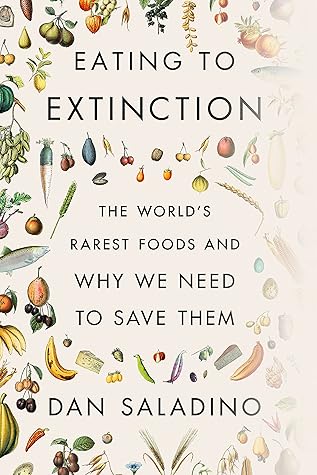More on this book
Community
Kindle Notes & Highlights
by
Dan Saladino
Read between
April 28 - May 5, 2023
These trees are also a part of my identity, my family history, and my village. These trees tell a story. Only a fool would risk losing these treasures.’
When the invaders arrived, the Aboriginal people were fitter and healthier than most Europeans. Today, Aboriginal people can expect to die a decade earlier than Australia’s non-indigenous population. Lack of access to affordable and healthy food is one factor in this.
The simple version is this: all of the world’s commercial citrus fruits have three main ancestors: the mandarin (Citrus reticulata), the pomelo (Citrus grandis) and the citron (Citrus medica).
Vavilov had so inspired his fellow scientists that they moved hundreds of boxes of seeds to a basement and took shifts inside the dark building, in the sub-zero temperatures, to protect the collection. What happened next is well known to botanists, but it’s a story we should all know. Surrounded by seeds they could have eaten, the caretakers of the collection faced hunger rather than jeopardise the genetic resource. By the end of the 900-day siege, in the spring of 1944, nine of them had died of starvation, including the curator of the rice collection.
NAFTA had overlooked so much: that food is also culture; that how maize is farmed matters; that traditional can be healthier. Maize was just maize, a commodity to be traded.
Where nature creates diversity, the food system crushes it.
When you factor in the amount of technology and the fishing power with which we attack the oceans now, the decline in fish seems even more stark; we caught seventeen times more fish in the 1880s per unit of fishing power compared with today. There are simply far fewer fish in the sea.
the United Fruit Company became so powerful it was known as el pulpo, the octopus, because of the long reach of its tentacles. In the 1930s and 40s, under the Guatemalan President Jorge Ubico, the company gained control of the majority of Guatemala’s cultivated land, which brought the promise of cheap labour.
It was in the fertile basin of the Conca d’oro that the Mafia perfected the art of the protection racket.
Beer exemplifies this trend: one in four beers drunk around the world are now brewed by just one company, A-B InBev (ABI), which owns Budweiser, Stella Artois and Corona and produces more than 88 billion pints a year (it sells the equivalent of three Olympic-sized swimming pools of beer an hour – more than its three nearest rivals combined).
‘I felt as though I was working with air,’ he said, moving his hands as if trying to feel something that wasn’t there. ‘And now I am a farmer and I am producing something real.’


